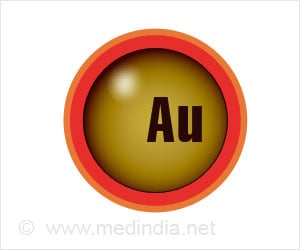- Nanoparticles are microscopic particles that have dimensions in nanometers.
- Spherical shaped silicon nanoparticles can be effectively heated up and used for cancer treatment.
- Semiconductor silicon nanoparticles are believed to be a safer and cheaper alternative to gold nanoparticles.
The research findings were published in the journal Nano Letters.
Gold Nanoparticles
The doctors could inject nanoparticles of biocompatible metals like gold into the human body, concentrate them on a tumor and irradiate them with a laser to carry out photothermal therapy and nanosurgery.
The biological tissues can be well absorbed by metal nanoparticles and can be converted into heat to destroy the cancer cells when compared to infrared light.
However, the difficulty lies in measuring a local temperature of the gold nanoparticles. If it is not done properly, the nanoparticles could lead to overheating and damage to the healthy tissue.
Newly Discovered Silicon Nanoparticles
The physicists from ITMO University has recently found a silicon material. The new study shows how the resonant silicon nanoparticles can be heated up faster than the gold nanoparticles. While, they could also signal about their temperature by scattering the light at different wavelength.
Testing the Efficacy of Silicon Nanoparticles
By knowing that the silicon material is biocompatible and the optical response depends on temperature, the research team tested how effectively the nanoparticles are heated and how one could register the temperature.
They raised the temperature of silicon nanoparticles by illuminating them with laser and record the emitted Raman signal that could allow temperature detection.
When compared to the golden nanoparticles, the silicon nanoparticles were found to be four times more efficient in converting the laser radiation to heat. This could actually allow changing the nanoparticles’ temperature by using a less powerful beam without heating the nearby healthy tissue.
The research team believed that the semiconductor nanoparticles could be a cheaper and safer alternative to metal.
Sergey Makarov, senior researcher of Department of Nanophotonics and Metamaterials at ITMO University, said, "In the future, one will be able to kill cancer cells with high precision by heating them with the help of such nanosystems. The real-time optical control of their temperature will prevent healthy cells from uncontrolled overheating."
References
- George P. Zograf et al, Resonant Nonplasmonic Nanoparticles for Efficient Temperature-Feedback Optical Heating, Nano Letters (2017) DOI: 10.1021/acs.nanolett.7b00183
Source-Medindia











